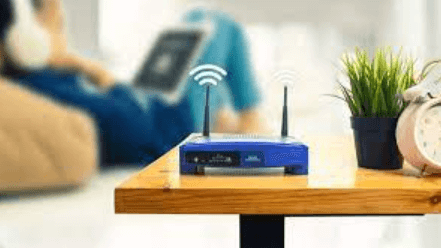Enhancing Your Home Wi-Fi Signal: Practical Tips and Solutions

Introduction to Wi-Fi Optimization
Experiencing a poor Wi-Fi signal at home can be frustrating, especially in our increasingly digital world where a stable internet connection is crucial. Fortunately, there are several effective strategies you can employ to boost your Wi-Fi signal and enjoy uninterrupted connectivity.
Assess Your Router’s Location
The placement of your Wi-Fi router significantly impacts signal strength. Ideally, position your router in a central location, away from walls, metal objects, and other electronic devices that could interfere with the signal. Elevating the router can also help in dispersing the Wi-Fi signal more evenly throughout your home.
Upgrade Your Router
If your router is outdated, it might not be capable of providing optimal coverage. Upgrading to a newer model, especially those supporting the latest Wi-Fi standards (like Wi-Fi 6), can significantly improve your home Wi-Fi signal. Modern routers offer better range and more efficient handling of multiple devices.
Utilize Wi-Fi Extenders
Wi-Fi extenders, also known as repeaters, can boost your Wi-Fi signal in areas of your home where the signal is weak. These devices work by receiving your existing Wi-Fi signal, amplifying it, and then transmitting the boosted signal.
Optimize Router Settings
Adjusting your router’s settings can also enhance your Wi-Fi signal. This includes selecting the least congested Wi-Fi channel and enabling Quality of Service (QoS) settings to prioritize bandwidth for high-demand activities like streaming or gaming.
Secure Your Wi-Fi Network
An unsecured Wi-Fi network is not just a security risk; it can also impact your network’s performance if unauthorized users access it. Ensure your Wi-Fi is protected with a strong password and consider hiding your network’s SSID (Service Set Identifier) to make it less visible.
Consider a Mesh Network System
For larger homes or buildings with complex layouts, a mesh network system can be a game-changer. Unlike traditional routers, mesh systems use multiple satellite modules to create a seamless Wi-Fi network throughout your home, eliminating dead zones.
Conclusion
In conclusion, improving your home Wi-Fi signal involves a blend of strategic placement, technological upgrades, and network optimization. Simple adjustments like relocating your router can significantly enhance signal strength, while investing in modern equipment such as the latest routers or mesh network systems can provide a more comprehensive solution for larger spaces. Additionally, configuring your router settings and securing your network not only optimizes performance but also protects against unauthorized access. By implementing these strategies, you can significantly enhance your Wi-Fi experience, ensuring a stable and robust connection that supports all your online activities. Remember, a strong Wi-Fi signal is not just about the technology; it’s about the smart and efficient utilization of that technology in your home environment.
FAQs
Q: Can household appliances affect my Wi-Fi signal?
A: Yes, household appliances like microwaves and cordless phones can interfere with Wi-Fi signals due to the electromagnetic waves they emit, especially if they operate on a similar frequency as your Wi-Fi router.
Q: How often should I update my router?
A: It’s a good idea to consider upgrading your router every few years to benefit from the latest technology and security updates. However, if your current router is meeting your needs, an upgrade may not be necessary.
Q: Is it better to use a wired connection instead of Wi-Fi?
A: Wired connections, like Ethernet, generally offer more stability and faster speeds than Wi-Fi. If you require a high-performance connection for activities like gaming or high-definition video streaming, a wired connection is preferable.
Q: Can changing the antenna on my router improve signal strength?
A: Yes, in some cases, upgrading to a higher-gain antenna can boost your Wi-Fi signal range. However, this depends on your router model and the compatibility of the antenna.




